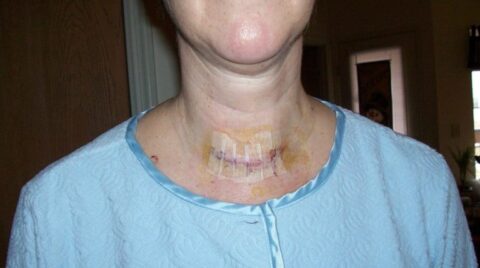 Did you know the typical mattress can contain tens of thousands of dust mites?
Did you know the typical mattress can contain tens of thousands of dust mites?
I know, it’s not the most reassuring thought — especially if you suffer from asthma or allergies.
The truth is 85% of homes have detectable levels of dust mites.
…Who knew?!
Check out the hidden world of dust mites in this video:
What Are Dust Mites Like?
Dust mites are microscopic little creatures that feed on the dead skin cells shed by people and their pets.
This video shows what dust mites really look like and how they affect humans.
Since dust mites primarily feed on dead cells and dander, they are neither parasitic nor disease carriers. For the most part they’re just gross.
Unless you’ve already gone to great lengths to eliminate them, it is very likely that dust mites are present and hiding all throughout your home. The house may look clean, but unless you’re checking with a microscope you won’t really know just how numerous the dust mites are where you live.
Have you ever looked closely at a sunbeam streaming through a window? About 80% of the flecks you see floating in most sunbeams in your home are dead skin cells… and dust mites.
Yep, dust mites are floating freely in the air inside your home! Or rather, their feces is. Their bodies remain attached to things like beds, rugs, curtains, carpet, furniture, pillows, and toys.
Dust Mite Allergy Facts
As mentioned in the above video, approximately 18 to 30% of Americans are allergic to dust mites.
If you have asthma, then you will probably be more susceptible to dust mite allergies.
It’s a specific protein within dust mite feces that is responsible for allergic reactions in some people.
It is the protein DER p1 in the fecal products and disintegrating body parts of these minute dust mites that has a mighty adverse effect on those who are allergic to it. Dust mites produce about 20 pellets per day, each measuring about 10 to 24 µm (micrometers – formerly microns) in size. To put that in perspective, the diameter of the human hair measures 80-100 µm. A gram of dust can hold 250,000 of these minute droppings. They are so tiny and light that they float easily into the air when disturbed by our daily activities. Inhaling these minute particles causes allergic reactions in those who are sensitive to this protein. Source
Dust Mite Control
The best way to get rid of dust mites is to control the dust within your home.
This includes using air filtering systems, regular washing of bed linens, daily showering to remove dead skin cells, and enclosing your mattress and pillows in dust-proof or allergen impermeable covers.
A researcher at the University of Texas-Austin found a HEPA air filter was much more effective at removing dust than ion-generating air purifiers which make particles electrically charged to remove them from circulating air. Source
As mentioned in the first video, you don’t have to pay for costly high-tech methods that use things like dry steam or ultraviolet light to kill dust mites.
These simple DIY methods are just as effective:
- adding dust-proof pillow covers
- adding dust-proof mattress covers
- vacuuming carpet regularly (though this is less effective than once believed)
- washing towels, sheets & blankets in very hot water once a week
- removing clutter (like decorative pillows & stuffed toys)
In terms of how much dust mite allergen got into the nose, the new [HEPA-filter] vacuums were no better than the old one. Gore and colleagues deduce that all the vacuums stirred up dust mite allergens from the carpet. The amount of dust mite particles that got into the vacuumers’ noses was small, even when they used the old vacuum. And changing the vacuum cleaner bags — even on the fancy vacuums — produced a small cloud of dust. Gore’s team concludes that HEPA-equipped vacuums don’t reduce allergen exposure and should not specifically be recommended by allergists. Source
A few other things you can do are:
- Reduce humidity levels to less than 50% inside your home, especially in the bedroom. (Dust mites do not drink water. Instead, they absorb water from the air and environment.)
- Keep the thermostat in the house below 70 degrees Fahrenheit.
- Replace feather and down pillows, mattress protectors, and blankets with those having synthetic fillings.
- Remove carpeting and replace it with wood, tile, linoleum, or vinyl floor covering
- Reduce the number of pets with fur or feathers inside your home. Or at least move their bedding as far away from yours as possible.
- Avoid overstuffed, upholstered furniture because it tends to retain a lot of dust and, therefore, dust mites.
- Clean or replace the air filters on your furnace or air conditioner at least once a mont
No acaricides are registered for dust mite control, but benzyl benzoate or tannic acid may reduce levels of dust mites. Be careful if you decide to use these chemicals. According to the Mayo Clinic, these chemicals worsen allergies in some people. It is wise to use non-chemical dust mite control measures around people with serious allergies. Cleaning and non-toxic approaches listed above should give adequate control, except in humid, tropical regions of the world. Source
Contrary to what your mom taught you about making your bed every morning, leaving your bed unmade will permit the bed linens to air out and dry quicker. A lack of moisture means fewer dust mites.
Dust Mite Allergy Symptoms
If you find yourself sneezing more often than normal or if you’ve developed a wheeze when you breathe, you should pay a visit to your doctor. Respiratory conditions can easily be caused (or made worse) from dust and the microscopic creatures that live in it — known as dust mites.
Dust mite allergy symptoms can mimic a cold or other allergies (like pollen):
- red, itchy, watery eyes
- runny, itchy, stuffy nose
- sneezing
- coughing
- shortness of breath
- wheezing (similar to asthma)
It’s not until your doctor runs a series of allergy tests that you will know for sure if dust mites are the cause of your symptoms or not.
Treatment For A Dust Mite Allergy
There are 3 diiferent treatments for allergies to dust mites:
1. Medications — the meds are the same as that for pollens and other inhalant allergies: bronchodilators, antihistamines, and corticosteroids.
2. Allergy shots — also known as immunotherapy, allergy shots contain small amounts of allergens. The shots are given on a regular schedule so that your body gets used to the allergens and no longer overreacts to them. Allergy shots are only used when the allergens you’re sensitive to can be identified and when you can’t avoid them. It takes anywhere from a few months to a few years to finish treatment. For a dust mite allergy, you may need to get allergy shots throughout your life.
3. Targeted avoidance — which means you stay away from or limit exposure to the specific substance in dust that is triggering your allergy symptoms. (This only works if testing shows you are allergic to something in dust, such as pet dander or dust mites.)
Bed Bugs vs Dust Mites
Bed bugs are very different from dust mites. They are large enough to be clearly visible, and they have a nasty bite to them!
Although bedbugs feed off the blood of their victims, extensive testing has shown no incidences where they have spread a disease from one host to another.
Other than an irritation or itch in the area where you’ve been bitten by a bed bug, it’s unlikely that you will experience any serious affect from bedbugs either.
I’ve been involved in RVing for 50 years now — including camping, building, repairing, and even selling RVs. I’ve owned, used, and repaired almost every class and style of RV ever made. I do all of my own repair work. My other interests include cooking, living with an aging dog, and dealing with diabetic issues. If you can combine a grease monkey with a computer geek, throw in a touch of information nut and organization freak, combined with a little bit of storyteller, you’ve got a good idea of who I am.







